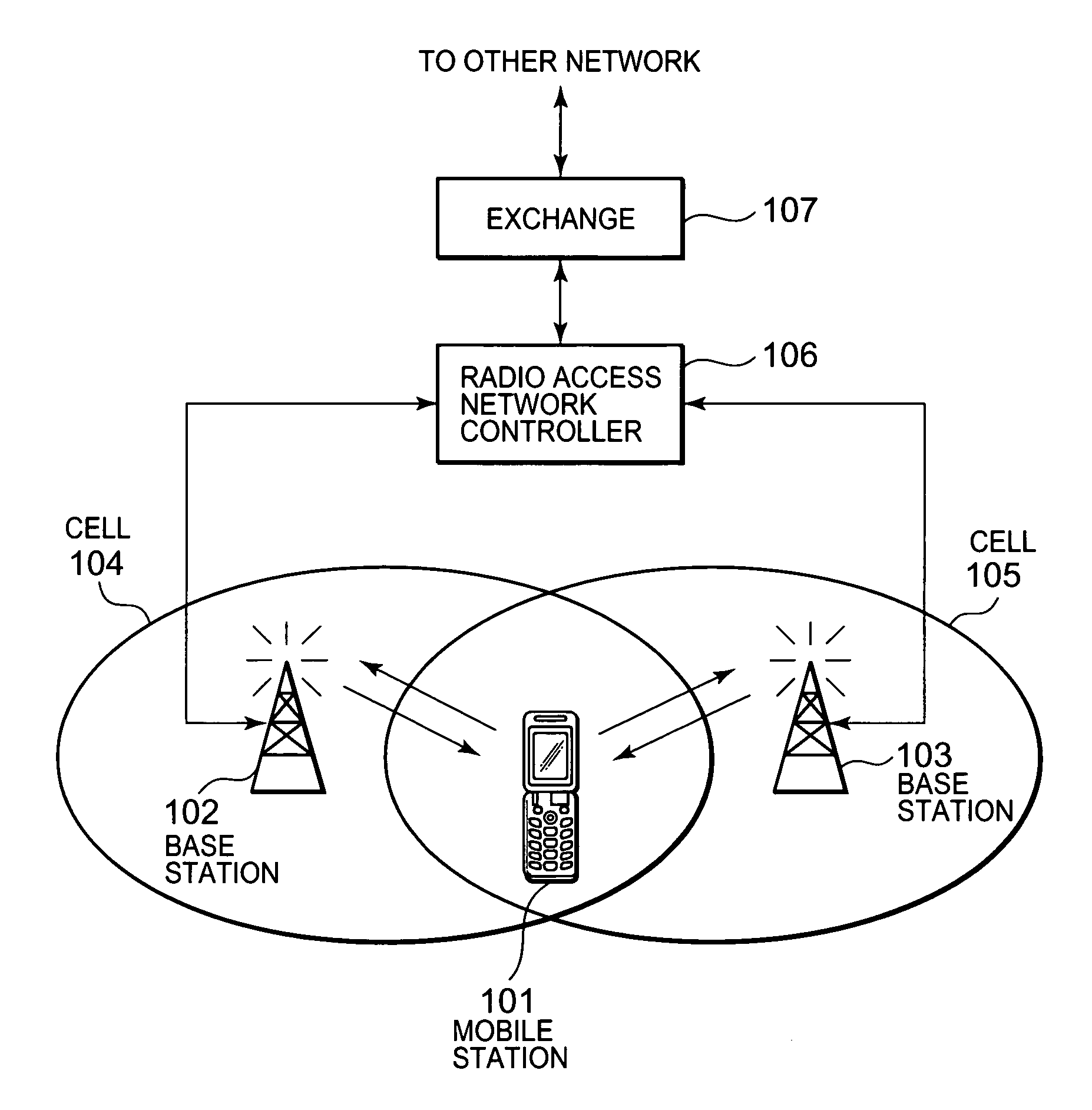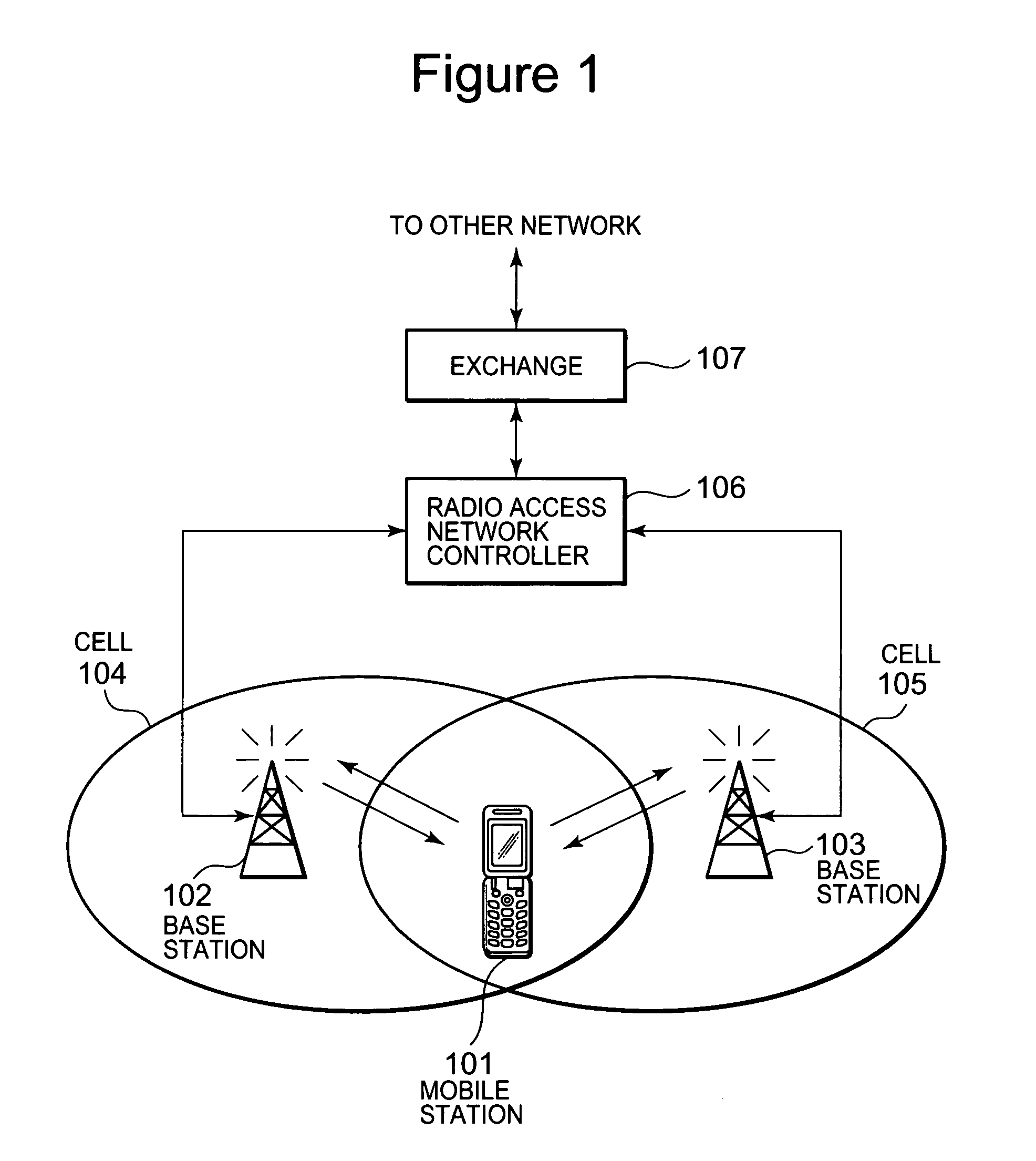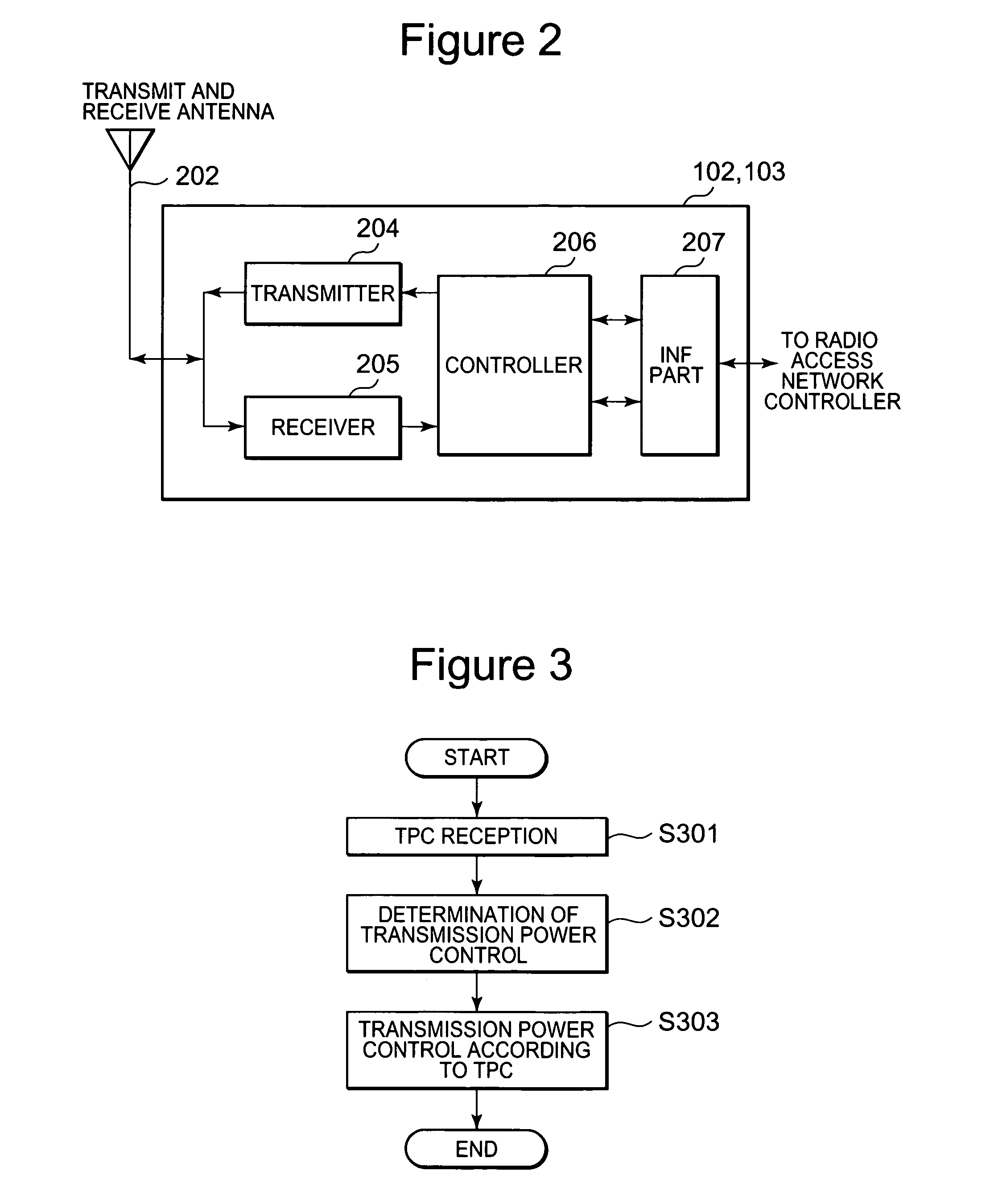Base station, mobile station and control method therefor
a mobile station and transmission power technology, applied in power management, transmission monitoring, electrical equipment, etc., can solve the problems of deteriorating communication quality, interference, and difficulty in completely preserving the orthogonality of all transmission codes used,
- Summary
- Abstract
- Description
- Claims
- Application Information
AI Technical Summary
Benefits of technology
Problems solved by technology
Method used
Image
Examples
embodiment 2
[0138]The second exemplary embodiment of the present invention is now described. In order to avoid redundant description, a description of parts that are same as those in the first exemplary embodiment of the present invention is omitted and a description is provided of only those parts that are different to the first exemplary embodiment.
[0139]A difference between the first exemplary embodiment and the second exemplary embodiment is contents of the processing corresponding to S302 of FIG. 3. FIG. 7 is a flowchart of processing relating to the second exemplary embodiment.
[0140]Principle differences between the two exemplary embodiments are an addition of a step (S701) that determines whether or not the mobile station 101 is in a SHO state as well as a correction processing (S704) that is performed when the mobile station 101 is not approaching and the base station 202 does not provide the best path.
[0141]By previously adding the step of determining a SHO (S701) state, the processing...
embodiment 3
[0154]A third exemplary embodiment of the present invention is now described. Unlike the two exemplary embodiments described above, the third exemplary embodiment relates to a mobile station.
[0155]Similarly to the foregoing two exemplary embodiments, a system that applies this exemplary embodiment is shown in FIG. 1. To avoid redundancy, a description of FIG. 1 is omitted here.
[0156]FIG. 8 is a block diagram of principal functions of the mobile station 101 of the third exemplary embodiment of the present invention. A mobile station 101101 of FIG. 8 corresponds to the mobile station 101 of FIG. 1. The mobile station 101 comprises a transmit and receive antenna 802, a receiver 804, a transmitter 805, a controller 806, a speaker 807 and a micro phone 808.
[0157]The transmit and receive antenna 802 is an antenna that transmits and receives radio signals from the base station 102 and 103, and it is used for communication with the base stations 102 and 103.
[0158]The transmitter 805 amplifi...
embodiment 4
[0190]A fourth exemplary embodiment of the present invention will now be described. The fourth exemplary embodiment relates to setting a path (i.e., a base station) with which a mobile station performs transmit power control. In order to avoid redundant description, a description of parts same as those in the third exemplary embodiment of the present invention is omitted here and a description is given of only parts different to those in the third exemplary embodiment.
[0191]The fourth exemplary embodiment will be described referring to FIG. 11. FIG. 11 is a flowchart illustrating a setting of a path (i.e., a base station) with which the mobile station 101 performs downlink transmit power control.
[0192]The mobile station 101 measures reception power of dedicated CHs transmitted from a plurality of base stations (S1101), and sets a path (a base station among the plurality of base station) with which the mobile station 101 performs downlink transmit power control based on information r...
PUM
 Login to View More
Login to View More Abstract
Description
Claims
Application Information
 Login to View More
Login to View More - R&D
- Intellectual Property
- Life Sciences
- Materials
- Tech Scout
- Unparalleled Data Quality
- Higher Quality Content
- 60% Fewer Hallucinations
Browse by: Latest US Patents, China's latest patents, Technical Efficacy Thesaurus, Application Domain, Technology Topic, Popular Technical Reports.
© 2025 PatSnap. All rights reserved.Legal|Privacy policy|Modern Slavery Act Transparency Statement|Sitemap|About US| Contact US: help@patsnap.com



